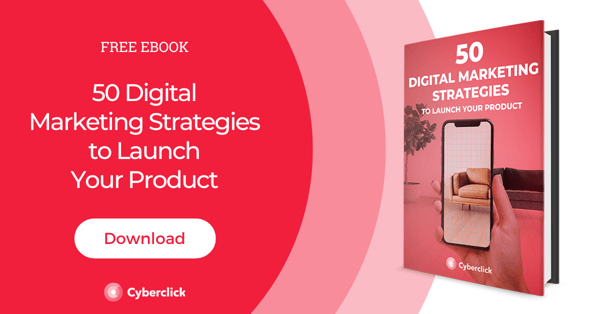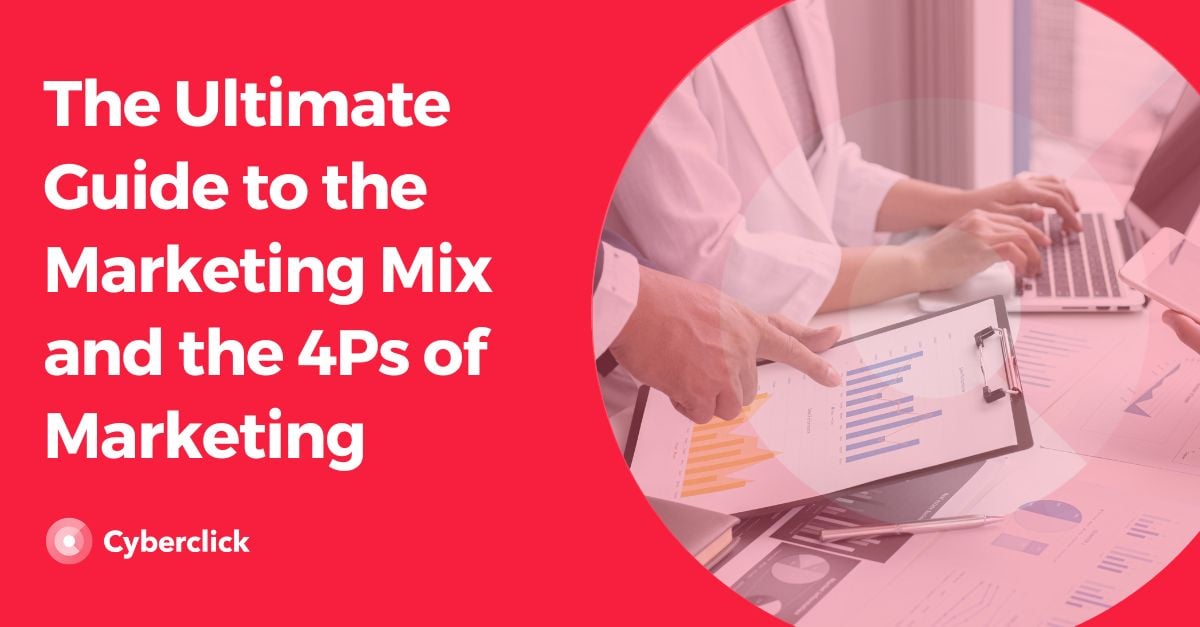Getting the word out about your brand or product can seem overwhelming considering the wealth of options available in our data centric world. While having dozens of platforms and mediums to spread the word provides something for everyone, sometimes less is more. Sticking to formulas, like the 4P marketing mix, that are seemingly evergreen, can create some much needed clarity in a crowded space.
What Is the Marketing Mix?
Creating a marketing strategy involves a broad range of decisions and strategies a marketing team chooses to undertake. It’s a complex task to research, plan and execute a campaign, especially so if even one core principle is misaligned. These decisions need to take into account countless variables and still reliably hit the mark. This concept as a whole is what we call the marketing mix. A handful of methods have been created to organize or classify these, including: the 7 P’s, the 4 C’s and of course what we’ll focus on in this post—the 4P’s of the marketing mix.
What Are the 4P's of Marketing?
As a guideline, the 4P’s offer a simple to follow structure that addresses four fundamental pillars for creating a marketing strategy. They are product, place, price and promotion. Devised by EJ McCarthy in the 1960’s the 4P’s still hold their water as an efficient tool, even as our business world has changed dramatically in recent decades. So what exactly are the 4 ps of marketing and how can we use them now?
Product
Whether it’s a product or service this is the first point that must be addressed and drilled down. So often we tend to focus on technical aspects of what we offer, such as features and materials used. While these are no doubt selling points, what’s more important is addressing customer pain points. What problem(s) does your product solve? How does your service make their lives easier or better? It’s all about the benefits you can provide. It’s also important to create a point of differentiation, or what sets you apart from competitors. Packaging, branding and creating a sense of perceived value also fall under this P of the marketing mix.
Place
The 2nd P is all about how you get your product or service in front of potential customers. And online options now make it possible for you to present your offerings at any time of day, in multiple mediums and across all devices. This is a tall order, however, as an organization needs to test, monitor and follow through across many channels before finding the ones that stick. Perhaps it’s video marketing or maybe it’s banner ads. This distribution strategy also includes any brick and mortar locations, resellers and affiliates.
Making it as easy as possible for your potential customers to access your product is essential. That could mean remarketing after initial interest is shown. You want them to have a smooth, fast and painless buying experience that’s also memorable. Logistics such as storage, inventory management and deliveries are covered in the 2nd P.
Price
Finding your ideal price point is a science in and of itself—how to maximize the final selling price while still balancing customers’ willingness to pay can be very tricky indeed. A series of both internal and external factors come into play:
- Keeping in line with the organizations financial projections
- Costs associated with sourcing and manufacturing
- Purchasing power of the target market
- Product/service demand in the marketplace
- Direct competitor pricing and how successful they are
- Industry trends and perceived value of given product(s)
- Product and brand placement in terms of either luxury or value market segment (perhaps even somewhere in the middle)
- Subscription, one time or seasonal purchasing
- How small price increases or decreases effect sales
All of these determinants combine to create a pricing point that helps companies reach their targets. In the end, however, it all comes down to what a customer is willing to pay. Ultimately that means we must maximize the perceived value of our offerings with a marketing strategy that speaks to the desired audience in a way they can understand and relate to.
Promotion
Once we have the other three components of the 4P’s of the marketing mix in place, we can now focus on promotion. Promotion covers a broad number of activities and strategies aimed at placing our product in the right place, at the right time and in front of the right audience. In essence we want to share as many of the benefits and selling points as possible. Marketing, direct sales, branding, product or industry specific education, public relations, use of third party validation, networking events—these are all under the umbrella of promotion. And they should all send a cohesive, fine tuned message that shows consistency.
As you can see, the 4P’s of the marketing mix are simple but not necessarily easy to define. It takes time, testing and a lot of fine tuning to find what works. Regardless, these four ps of marketing are tried and true in terms of addressing fundamentals. Have you applied them to your marketing strategy yet? We’d love to hear your experiences below!
Responsable de la estrategia de contenidos y visibilidad en Cyberclick, con enfoque Allbound y especialización en posicionamiento SEO, GEO y automatización con IA. Gestión avanzada del CRM con HubSpot: base de datos, workflows, lead nurturing, scoring y reporting. Experiencia en marketing digital, comunicación corporativa y periodismo, uniendo estrategia, creatividad y tecnología para captar y convertir leads cualificados.
Responsible for content and brand visibility strategy at Cyberclick, with an Allbound approach and specialization in SEO, GEO (Generative Engine Optimization), and AI-powered automation. Advanced HubSpot CRM management: database segmentation, workflows, lead nurturing, scoring, and reporting. Background in digital marketing, corporate communications, and journalism—combining strategy, creativity, and technology to attract and convert qualified leads.





%20in%20SEO.webp)
Leave your comment and join the conversation